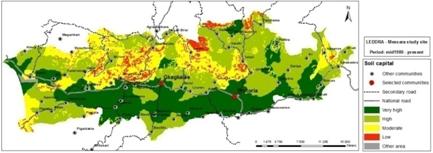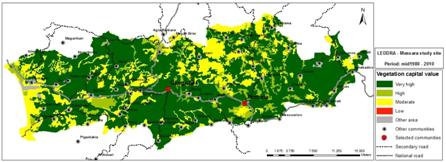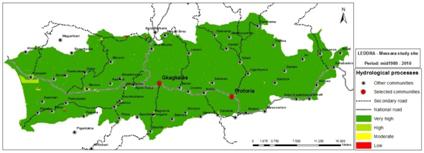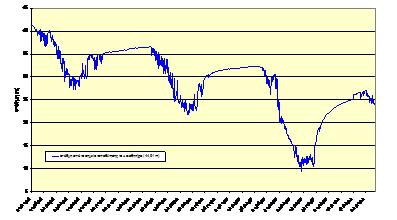Study sites in cropland
Study sites in grazing land
Study sites in forests
Olive transition period (1970 to late 1980s)
| Lead authors: | Constantinos Kosmas, Giovanni Quaranta |
| Contributing authors: | Aikaterini Kounalaki, Mina Karamesouti, Eleni Briassouli, Minas Metaxakis, Vassilis Detsis, Thanasis Kizos, Theodoros Iosifides, Alexandros Kandalepas |
| Editor: | Alexandros Kandelapas |
Editor's note 9Oct13: Source D132-2.2.
Assessment of natural, economic and social capitals
| Natural capital | |
| Assessment | Soil capital is generally high or very high, although some decline becomes evident, due to soil loss (surface water runoff)or soil displacement by (tillage erosion).
The water capital remains generally high, except in Messara's lower aquifer. Annual total water quantity in Messara Valley is estimated at around 555 Mm³, depending on amount and distribution of rainfall. Water quality is mainly high but problems of salinity have been identified in the coastal aquifer. Vegetation capital during the period increases and is generally high, as (low capital) cereals are now completely replaced by perennial olive trees.
Climate capital remained moderate. |
| Critical functions | Regulation of hydrological processes and surface energy balance increase due to increased plant cover by olive groves.
Olive oil production shows a great spatial variability with the most productive areas located in the lowland area and the least in the north-western part of the valley. Over the three periods, olive oil production shows a decline in areas of high productivity and an increase in areas of low productivity. Messara Valley is highly productive with regard to the production of vines. |
| Critical variables | Annual soil loss due to water and tillage erosion in Messara Valley (a slow variable) is estimated between 0.01 mm to 9 mm depending on the land characteristics. Loss of soil in areas with consolidated parent materials (limestone, flysch, inter-bedded marls) can strongly affect plant productivity.
The change in land use (a slow variable) is completed during the period: olive groves expand from 38.4% of the area of the study site in 1974 to 90.9% in 2010. In this context it is important to note that olive trees are extremely suited to the area and under semi-natural conditions (even drought) support remarkable diversity of flora and fauna as well as protection from erosion and desertification. Climate is dry sub-humid exhibiting a slight decreases in mean annual rainfall after 1975 and an increase in average annual air temperature (0.2-0.4 °C) Water resources (a fast variable) came under severe physical, social, economical and environmental pressure. Surface and groundwater availability is decreasing in the lowlands. Water quality is also deteriorating due to combination of nitrate pollution and salinization.
|
| Economic capital | |
| Assessment | The tertiary sector now produces most of the GDP in Crete and Heraklion reflecting the dominance of tourism. However, Messara retains some of its primary sector due to the (by now, almost complete) conversion to olive plantations. Olive plantations have the advantages that they may be managed by absentee owners while retaining symbolic value as family assets.
Financial capital expands to unprecedented levels due to Common Agricultural Policy (CAP) subsidies and credit from public and private banks. Standards of living rise significantly. Agricultural investment (in technology, machinery) increases. Landesque capital also increases to include mainly olive mills, new irrigation infrastructure (plastic) and green houses. Physical capital increases greatly with regard to transport and quality of life infrastructures and to a lesser degree to productive infrastructures (vegetable packaging units in the Tympaki area, olive mills and small cheese making units). Technology increases in irrigation (drills and small pumps) and transport (exponential increase in number of trucks). Since the late 1990s information and communication infrastructure has also expanded For animal (livestock), plant and forest capital, olive plantations now constitute the main capital along with sheep and goats. Between 1991 and 2001 the number of sheep and goats almost double, although more recently it has fallen again. |
| Critical functions | Critical economic functions include the wide availability and affordability of credit. |
| Critical variables | Critical economic functions include the wide availability and affordability of credit. |
| Social capital | |
| Assessment | Demographic capital remains relatively stable, with inflow of foreign migrants offsetting ageing. Formal human capital increases with regard to formal education, although it becomes apparent that there is an absence of formal agricultural training and education, as agricultural practices and technologies shift and local knowledge is lost.
The characteristics of cultural and social capital persist. As agriculture is transformed however, these networks are often redeployed in connection to party politics and most notably access to mechanisms for the allocation of CAP subsidies. Finally, the characteristics of institutional capitalbegin to change as local and regional government acquires more competences. |
| Critical functions | Cooperation networks between farmers and shepherds wither and are partly replaced by competition for natural and/or economic resources. |
| Critical variables | Cooperation networks between farmers and shepherds wither and are partly replaced by competition for natural and/or economic resources. |
Identification and assessment of the main LEDD problems and responses to LEDD
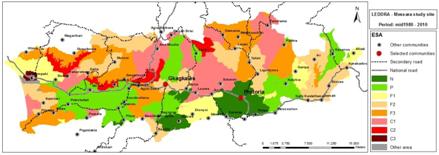 |
Soil erosion is relatively low in the valley owing to adequate protection of the soil by olive trees. Nevertheless, small numbers of plantations high soil erosion (until plant cover exceeds 45%). Land desertification becomes a serious problem. |
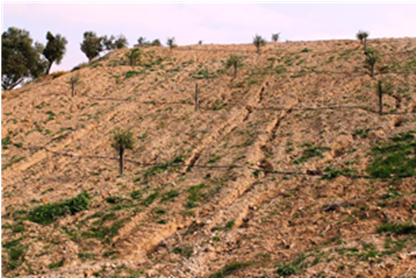 |
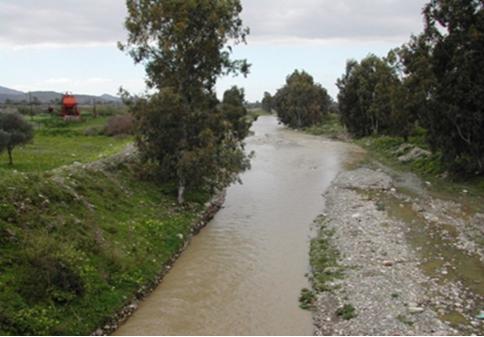 |
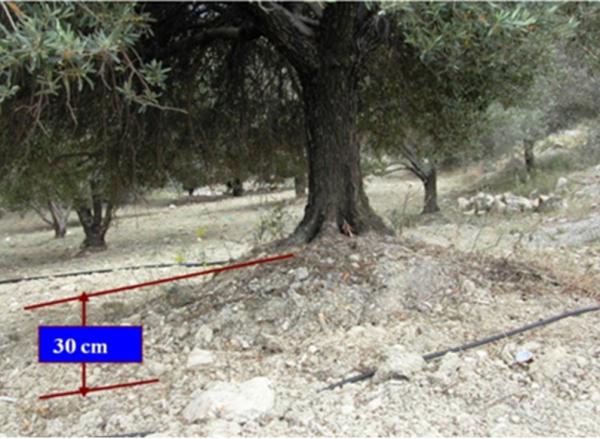 |
In older groves, tillage erosion is present in areas where mechanical equipment is being used, reaching losses of up to 50 cm during the last 40 years.
The main responses are (a) intensive cultivation of the land (negative), and (b) integrated land management (positive).
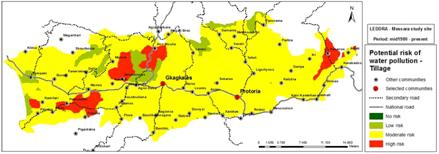 |
Ground water pollution is another major problem, especially when ground water is used for drinking purposes. The main source of pollution is the applied fertilizers and pesticides especially after 1970s. High amounts of fertilizers are used in areas cultivated with vegetables. Based on the land characteristics and land management practices of the Messara Valley, the risk for ground water pollution by nitrates is mainly characterized as moderate. |
The main national response to nitrate pollution consists of the identification of sensitive areas and application of specific programmes of measures as foreseen in EU regulation 91/676. Messara, however, is not on the list and no local/ regional responses have been applied.
Areas sensitive to land desertification widely expand in the area.
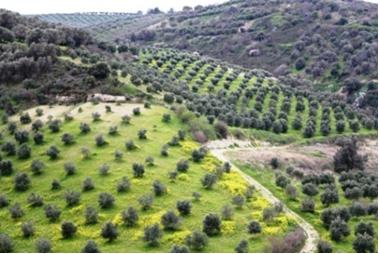 |
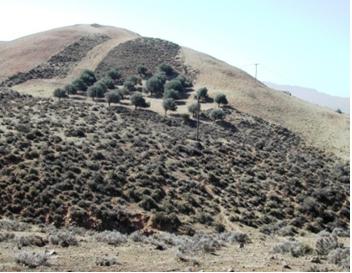 |
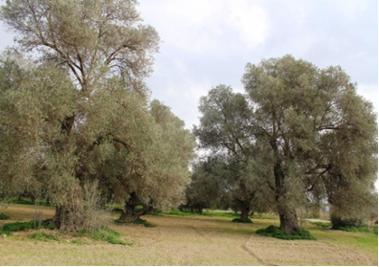 |
The main responses to land desertification during the olive-subsidy period are:
- intensive cultivation of the land (negative),
- integrated land management (positive),
- expansion of irrigation,
- water harvesting.
Expansion of irrigation by drilling wells and pumping water from the aquifers of the Messara Valley started in the previous period and continues in this. In addition to drilling wells, three medium size water reservoirs are built. A dense distribution network is installed and water is transported in the hilly dryland areas, improving significantly crop production. However, expansion of irrigation results in over-exploitation of aquifers and intrusion of brackish water with adverse consequences on soil salinization in the lower western part of Messara Valley.
Policy context
AK: to check that implementation, impacts and effectiveness of selected policies are discussed in this text. Look at D142 to see if there is any additional information.
The period is characterized by the main political projects of the EEC/EU (single market, monetary union). In this context, Greece is also part of trade liberalization on a global scale. Liberalization of credit markets and low interest rates are a defining feature of the period.
Various reforms take place, most notably with regard to devolution. The first elections for head of prefecture (previously appointed) take place in 1994. A large-scale administrative reorganization occurs in 1997: communities and municipalities in the Messara study site are reduced from over 50 to 9 and then to 4 in 2010.
The first Regional Framework for Spatial Planning of Crete is approved in 2003 followed by several Special (sectoral) Frameworks for Spatial Planning at the national level. Nevertheless, spatial planning for the study site remains problematic due to conflicting provisions of the regional framework (promoting agricultural land use, containment of urban expansion) and the sectoral frameworks (large scale land-use change for hotels and renewable energy installations). The policy is also hampered by the lack of bottom-up political demand from municipalities to prepare and institute local planning instruments.
Development policies continue to dominate primarily through the EU structural funds. Large scale investment in roads, ports and telecommunications takes place. Although investment is largely concentrated in the main cities (in this case Heraklion) there is a general improvement in connectivity with rural areas. Hospital, school and university infrastructure also improves and research and social programmes expand. Road works are the main recipients followed by rising investment support for small enterprises.
Regional aid finances a series of projects in the area including water treatment facilities, schools and General Spatial Plans. However, such efforts are hampered by:
- chronic inabilities of the administration with regard to project development, cases in point being the reservoir without irrigation networks and water management arrangements (Faneromeni) and the treatment plant without sewage network (Tympaki);
- successive reorganizations of governance structures (and therefore beneficiaries) influencing project development.
Overall, Messara receives a small fraction of regional aid directed towards Crete. However, investment in the region and the growth of the 1990-2008 period is visible in the study site. Tourism and construction grow, transport (road) and communication infrastructure improves and the agricultural sector benefits from the competitiveness of the greenhouse cluster of Messara. Support for expansion of tourism infrastructure (hotels and rooms) extends to the Messara coast and is complemented by construction of second homes for affluent Cretans and other Greeks. In this way, tourism continues to be related with other sectors, most notably the construction sector, shops and restaurants. At the same time, trade liberalization brings about a a gradual reorganization of local supply chains to cheaper "imports" from Athens and abroad.
In agricultural policy, the 1990s see a continuation of the subsidy system introduced in the 1980s based on quotas. The decoupling reform is finally implemented in 2005, based on "rights" acquired between the 1999-2001 period. From the outset, implementation of decoupling is faced with the lack of cadastre (an official land registry) and poor previous book-keeping. Cross-compliance, although instituted by law, remains poorly enforced.
The transition from subsidies to rural development is evident: investment support for agricultural holdings from 1994 onwards fuels "hard" investment in greenhouses around Tympaki and along the coast. Other provisions of rural development regulations, such as agri-environmental measures, remain non-implemented. The implementation of the LEADER approach since 1990, has an impact both in terms of investment and in the emergence of new actors and methods for rural development.
Technological improvements in groundwater extraction, credit availability and rising water demand (for tourism and agriculture) give rise to the need for water use regulation. Partial implementation throughout the 1990s means a proliferation of groundwater extraction without general water management plans. Depletion and salinization of the aquifer has been well documented by the Regional Water Department, but political incentives for the containment of the practice are weak, until 2008 and 2009 when further extraction water extraction is banned in approximately 60% of the Messara study site.
Legislation for urban wastewater quality generally applies to settlements over 3,000 inhabitants and remains irrelevant for the small settlements of Messara, despite the dramatic increase in wastewater during the summer months.
Horizontal environmental policy, with "approval of environmental terms of operation" as the main instrument is also in operation although no investments or public works are known to have been rejected on environmental grounds. Controls and inspections are extremely limited. Strategic environmental assessment is only recently implemented with regard to the Regional Operational Programme 2007-2013. Although the document highlights road construction as major threat for the Cretan environment, all evidence shows that road construction remains the main activity to be financed in Crete and Messara.
Policies as LEDD drivers: The non-implementation of formal spatial planning functions as a development strategy at the national and study site level. In the absence of formal constraints, all land is available for development, fuelling both local real estate markets and the construction sector. The greatest driver of LEDD in Messara is rural development policy. Support for improvement of agricultural holdings takes place in a vacuum of environmental control or any effort to coordinate resource use (water and soil).
Increasing EU and global trade drastically improves the availability and deployment of agricultural supplies and machinery. These products and methods however are often unsuitable for fragile farming terrain such as Messara. For example, the use of tractors on hilly slopes is a major factor for erosion. The same trade dynamic also puts increasing pressure for competitiveness and intensive resource use upon farmers.
Development policies such as the investment law and the EU structural funds also have a significant impact in the conversion of agricultural land to urban development by providing a variety of financial means for such development.
Policies as responses to LEDD. The Messara study site is largely unaffected by environmental policies, as their implementation has been inadequate. Attempts at water management by the Regional Water Directorate throughout the 1990s largely fall through, resulting in escalating scarcity and prompting a general ban on all new water extraction in 2008.
In the intersection of water, rural development and regional policy, the availability of finance means that technical solutions enjoy a general advantage over other responses to address LEDD problems. Thus, from 1994, the construction of reservoirs is aggressively promoted by formal and informal networks active around rural and structural funds management and public works. The consideration of alternatives or other long-term strategies and responses is extremely limited.
At the same time, one should note that rural development policy allows the emergence of new actors and methods of collective organization which may have a lasting influence. New forms of pooling of resources emerge both in the public (municipalities forming development agencies) and private (producer groups in organic farming or extrovert cooperatives) sectors. These forms of cooperation are facilitated and motivated by access to EU funds but the social mechanisms they entail may be replicated and/or redeployed in other fields or for the achievement of wider local objectives.
Properties of the system
AK: to check if there is any further relevant information in D133
The robustness in natural capital of the area under existing vegetation cover and soil characteristics shows a varying ability to retain the critical function of primary production. The lower part of the valley exhibits moderate to high robustness while the sloping areas are characterized by low robustness.
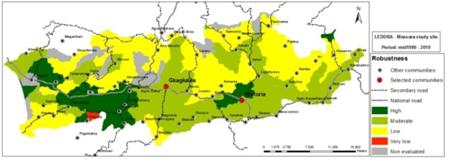
Land cover diversity values decline sharply in the olive subsidy period as the site is turned to an almost uniform olive orchard. Redundancy of cropland, based on the type of cropping and agricultural systems, is mainly characterized as low. Traditional agricultural systems are replaced by mono-cropping olive plantations. Connectedness is generally moderate. Openness is high as intensive agriculture under market conditions prevails. Areas covered with olive groves are characterized by low rapidity in recovering (three to four years).
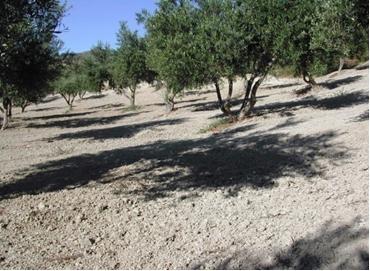
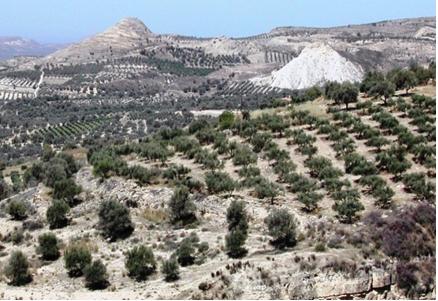
The shift towards a more open and market-oriented state continues as does the shift towards services as the dominant source of employment. Ageing of the population also continues. Transport facilities continue to improve due to unprecedented availability of public investment. Two important changes include CAP subsidies and credit from banks and investment programs.
Strong bonding social capital (family and kinship) persists and is intertwined with clientelist political networks granting access to CAP subsidies. This seems to contribute to a lack of trust, more antagonism and conflict and general distrust within the agricultural sector and towards all public institutions.
Institutional structures remain centralized for most of the period, with weak regional/local administrative structures. There is a low level of trust in formal institutions of local/regional government and cooperatives. Recent attempts at regional/local administrative restructuring retain strong continuities with the past.
Socio-ecological resilience
AK: to be added, source: D133
Socio-ecological fit of the dominant response to LEDD
AK: to be added, source: D133

